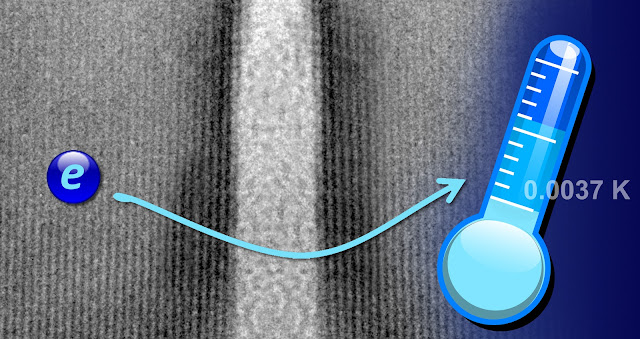CAPTION :
Illustration of single-electron tunnelling through an oxide tunnel barrier
in the primary
thermometer device. The measured tunnel current is used in determining
the absolute
electron temperature.
(January 27, 2016) The
first ever measurement of the temperature of electrons in a nanoelectronic
device a few thousandths of a degree above absolute zero was demonstrated in a
joint research project performed by VTT Technical Research Centre of Finland
Ltd, Lancaster University, and Aivon Ltd. The team managed to make the
electrons in a circuit on a silicon chip colder than had previously been
achieved.
Although it has long been possible to cool samples of bulk
metals even below 1 millikelvin, it has proved very difficult to transfer this
temperature to electrons in small electronic devices, mainly because the
interaction between the conducting electrons and the crystal lattice becomes
extremely weak at low temperatures. By combining state-of-the-art micro and
nanofabrication and pioneering measurement approaches the research team
realized ultralow electron temperatures reaching 3.7 millikelvin in a
nanoelectronic electron tunnelling device. A scientific article on the subject
was published in Nature Communications on 27 January 2016.
This breakthrough paves the way towards sub-millikelvin
nanoelectronic circuits and is another step on the way to develop new quantum
technologies including quantum computers and sensors. Quantum technologies use
quantum mechanical effects to outperform any possible technology based only on
classical physics. In general, many high sensitivity magnetic field sensors and
radiation detectors require low temperatures simply to reduce detrimental
thermal noise.
This work marks the creation of a key enabling technology
which will facilitate R&D in nanoscience, solid-state physics, materials
science and quantum technologies. The demonstrated nanoelectronic device is a
so-called primary thermometer, i.e., a thermometer which requires no
calibration. This makes the technology very attractive for low temperature
instrumentation applications and metrology.

